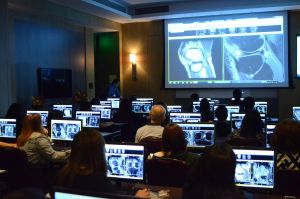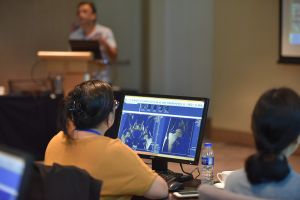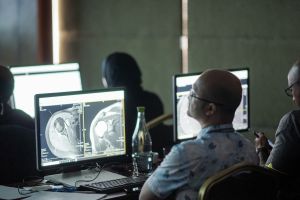1. SEQUENCES AND PLANNING
• Learn which Sequences to use & how to best plan the scans.
2. NORMAL VARIANTS
• Learn to recognize & report the various normal variants that mimic the Pathology.
3. BICEPS TENDON
• Learn the anatomy, pathology and the Imaging appearance of Biceps tendon disorders.Tendinosis,
tears, avulsions, & bony changes. Where to look, what to look for and how to report.
4. BRACHIALIS
• Anatomy, pathology and the Imaging appearance of Brachialis tendon disorders.Tendinosis, tears,
avulsions, bony changes and the Lacertus Fibrosus. Where to look, what to look for and how to
reports.
5. TRICEPS
• Learn the anatomy, pathology and the Imaging appearance of Triceps tendon disorders. Tendinosis, tears, avulsions and bony changes Where to look, what to look for
and how to report.
6.BURSAE
• Recognize the various bursae around the elbow. Anatomy, pathology and the Imaging appearance of BursaI disorders. Where to look, what to look for and how to report.
7. LATERAL EPICONDYLITIS &THE COMMON EXTENSOR ORIGIN
• Learn the Anatomy, pathology and the Imaging appearance of the Common ExtensorTendons.
• How to recognise, assess and report lateral Epicondylitis & tears and their relationship to the
Lateral Collateral Ligament. Where to look, what to look for and how to report.
8. LATERAL COLLATERAL LIGAMENT (LCL)
• Learn the Anatomy, pathology and the Imaging appearance of the various components of the LCL & their relationship to the Common Extensor Origin. Recognise & Assess Strains, Tears and Common extensor tear extensions.
9. POSTERO LATERAL ROTATORY INSTABILITY (PLRI)
• Anatomy, pathology and the Imaging appearance of PLRI. What is it and Why does it matter? Learn where to look, what to look for and how to report.
10. MEDIAL EPICONDYLITIS AND THE COMMON FLEXOR ORIGIN
• Learn the Anatomy, pathology and the Imaging appearance of the Common FlexorTendons.
• How to recognise, assess and report Medial Epicondylitis and tears. Where to look, what to look
for and how to report.
11. ULNAR COLLATERAL LIGAMENT (UCL)
• Learn the Anatomy, pathology and the Imaging appearance of the various components of the UCL.
Recognize & Assess Strains, Tears and Avulsions. Where to look, what to look for and how to report.
12. ULNAR NERVE NEURITIS
• Learn the Anatomy, pathology and the Imaging appearance of the Ulnar Nerve at the elbow. Entrapment and Neuritis. Where to look, what to look for and how to report.
13. POSTERIOR INTEROSSEOUS NERVE
• Learn the Anatomy, pathology and the Imaging appearance of the Posterior lnterosseous Nerve andhow to recognise and assess entrapment. Where to look, what to look for and how to report.






